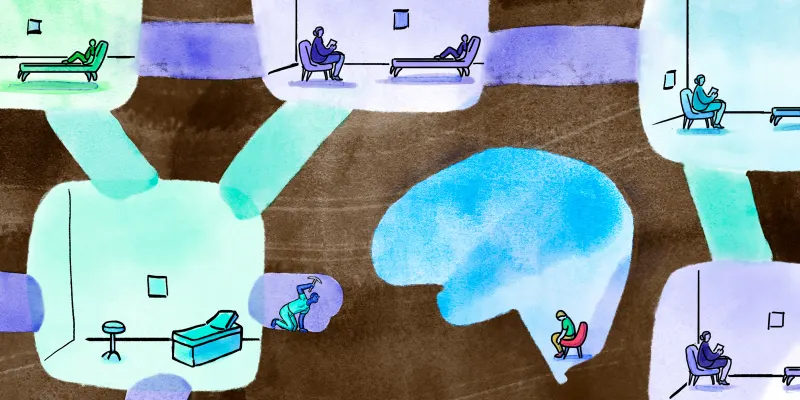
When is the last time you heard a patient say:
· “I need a beta blocker, and Coreg is the only one that works for me.”
· “I had to use more Glucophage, so I ran out early. I need a refill.”
· “Someone broke into my glovebox and stole my Synthroid. I need a new prescription.”
· “I lost my Mobic…”
Not often, right? Like any commodity, opioid consumption presumably acts by rules of both supply and demand — remember that from Economics 101?
This article is a follow-up to my previous one entitled “Immunity Ends Epidemics. Time to Focus on the Host.” In that article, I argued that, as with classic infectious disease epidemics, eradication of the crisis occurs when sufficient host immunity ensues. Elimination of the agent is generally impossible, and while vector attenuation is certainly of some benefit (overall environmental overhaul even more so), rendering the population impervious to the virulence of the agent (e.g., vaccination) is generally the most effective solution. What’s unique about the opioid epidemic (and other modern chronic disease epidemics for the most part) is that the host is pursuing the agent — whether narcotics, sugar, or avoidance of lactic acid and sweat — deliberately. We have to cultivate behavioral immunity in this case.
The supply and demand construct provides another perspective essentially illustrating the same concepts. Reducing consumption of a commodity is certainly achievable by supply restriction. However, in this situation for numerous reasons, supply restriction can and will only go so far. Reducing demand is far more intelligent and ultimately efficacious. As I’m not an economist, my application of the analogy is undoubtedly overly simplistic. However, I do understand that if people don’t clamor for plastic pink flamingos or garden gnomes, it won’t take long for these items to disappear from store shelves. People won’t have to hold rallies or picket in front of True Value or Walmart commiserating about the aesthetic issue plaguing their community. Isolated, small pockets will always undoubtedly endure, however at the population level, prevalence and incidence will be tolerable.
The opioid epidemic is obviously much more serious, and I hope that this lighthearted injection does not offend any who have struggled personally or suffered with loved ones‘ ruin by drugs.
At any rate, the basic underlying concept is inviolable: establish population-level shunning of a product and the market disappears. Easier said than done when the product is perceived as essential to life or well-being. And that’s where our job as physicians in education (harms instruction, analgesia/anesthesia expectation recalibration, motivational enhancement) and behavior modification coaching becomes intense and personal.
Telling your teenagers (awash with developmental drama, hormonal madness, etc.) not to use drugs is rarely a sufficient strategy. We have to provide a nurturing, validating, and strengthening environment for the development of our children’s mettle/moral fibre that precludes any thought — let alone inclination — toward errantly and tragically trying to find security and significance in substances.
It doesn’t necessarily take a village. It does take focused, consistent and loving edification though. It takes time and effort. That, I suppose, is the point of this editorial — and the preceding one — in a nutshell: It takes time and effort to cultivate behavioral immunity among our patients. It doesn’t work to just tell them not to use opioids, wean them off, refuse to prescribe, and/or refer them out.
But I digress; away from parenting and back to business. Similarities aside, for the most part, these are not our children we’re dealing with anyhow. We need to reduce demand by fostering aversion based on fully-informed risk: benefit ratio analysis. We need to reduce demand by educating that pain is the most important protective sense an organism possesses, and it is not something to simply be masked; its message is to be analyzed and acted upon. We need to shift demand by providing a better product to the marketplace. I’m not talking about other substances here — I’m talking about a comprehensive and truly biopsychosocial-spiritual approach to overcoming and preventing chronic pain.
The fact that we are rarely presented with the facetious examples of “I need…” at the beginning of this article highlight the key word in the sentence above: “…easier said than done when the product is perceived as essential to life or well-being.” Ironically, the sequelae of untreated hypertension, diabetes, hypothyroidism, etc. actually do pose very real threat to life, and yet how often they are not perceived as worthy of attention or lifestyle modification efforts! What is it about the comfort provided by opioids that is perceived as essential?
It’s not that pain is effectively relieved by the drugs. It can’t be. How many chronic opioid users rate their pain at 0, or 1, 2, 3 on the VAS every month despite massive quantities of drugs consumed? The pain is still there, along with the associated and perhaps underlying emotional distress. But there is comfort of some sort attained by the use of opioids that the dependent individual just can’t live without. We demand what we think we need. (The only other similar example in medicine I can recall is a mother insisting on antibiotics for her child’s viral upper respiratory infection. She’s motivated by nothing less sacrosanct than perception of mortal danger to her offspring and the desperation to intervene on that perception.) Anyhow, comfort must rank higher on the scale than health, or our general medical care would be directed to us by patients just as their analgesic orders are. Or perhaps we’d go out of business altogether because chronic disease would be eliminated by wise and moderate choices of diet, exercise, toxin avoidance, psychological and relational and spiritual wellness, etc.
How do we reduce or shift demand for opioids? When we figure that out, we have solved this crisis.
Heath McAnally, MD, MSPH, is a board-certified anesthesiologist, integrative pain physician and addictionologist who started and manages Northern Anesthesia & Pain Medicine. He is also a clinical instructor for the University of Washington School of Medicine, and the author of Opioid Dependence: A Clinical and Epidemiologic Approach.







